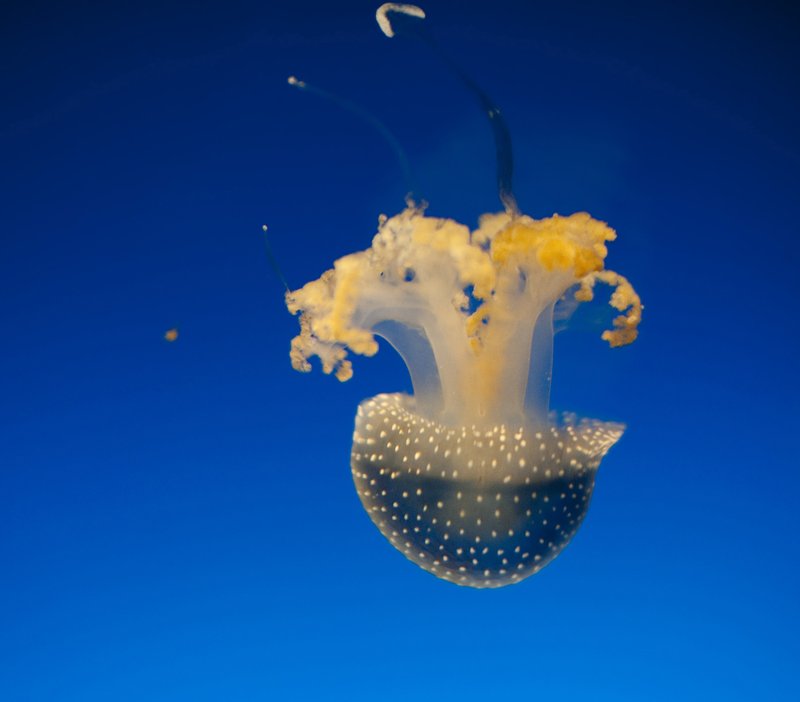
Let’s dive into this intriguing topic. Just like using a remote for your TV—it can be simple or complicated depending on how well you understand the buttons and features—you’ll need to know how to engage with jellyfish wisely. In this article, we will explore the different species of jellyfish, their stings, safe interaction practices, and what to do if you get stung. By the end, you’ll have a clearer picture of how to enjoy these captivating creatures without putting yourself at risk.
Understanding Jellyfish: The Basics
Jellyfish are fascinating marine animals that can be found in oceans all over the world. They belong to a group called cnidarians, which also includes corals and sea anemones. Most jellyfish have a soft, gelatinous body with tentacles hanging down from their bell-shaped umbrella. These tentacles are armed with tiny stinging cells used to capture prey and defend against predators.
You might be surprised to learn that jellyfish have been around for millions of years, even before dinosaurs roamed the Earth. They come in a dizzying array of shapes and sizes, from the tiny moon jellyfish to the enormous lion’s mane jellyfish. Each species has unique characteristics, including its venom, which can vary from barely noticeable to extremely painful.
If you’re considering an encounter with jellyfish, it’s good to know that not all jellyfish are dangerous. Some species have mild stings that feel like a little pinch, while others can cause severe pain or even be life-threatening. This is where understanding their behavior and habitat becomes crucial.
Identifying Dangerous Jellyfish Species
Not all jellyfish are created equal. Some can pack a powerful sting, while others are relatively harmless. Here are a few of the most dangerous jellyfish you might encounter:
- Box Jellyfish: Known for its cube-shaped bell and extremely potent venom, the box jellyfish is found in tropical and subtropical waters. Its sting can be fatal, so caution is essential.
- Irukandji Jellyfish: This tiny jellyfish is no larger than a fingernail but can cause severe symptoms known as Irukandji syndrome, including excruciating pain and even heart complications.
- Portuguese Man o’ War: Although not a true jellyfish, the Portuguese Man o’ War’s long tentacles can deliver painful stings, causing welts and even serious reactions.
When you’re at the beach or exploring the ocean, always keep an eye out for signs warning about jellyfish. Some beaches even have lifeguards who can help identify any dangerous species in the area.
How to Interact Safely with Jellyfish
If you’re eager to experience jellyfish up close, safety should always come first. Here are some tips on how to interact with them without getting hurt:
1. Observe From a Distance: One of the safest ways to enjoy jellyfish is by watching them from a distance. You can do this in an aquarium or during a snorkeling trip.
2. Use Protective Gear: If you’re considering swimming in waters known for jellyfish, wear a protective wetsuit. This will help shield you from stings while you explore.
3. Don’t Touch: This might seem obvious, but it’s worth repeating: don’t touch jellyfish. Even dead ones can still sting. Use a net or a container to observe them safely if necessary.
4. Be Aware of Their Habitat: Jellyfish can be found in a variety of environments. Learning about their usual habitats can help you avoid encounters. For example, they often gather near shore when the water is warm.
Being cautious doesn’t take away the wonder; it enhances your experience. Getting to observe jellyfish in their natural habitat can be mesmerizing, as their movements mimic the flow of water around them.
What to Do If You Get Stung by a Jellyfish
Accidents can happen, even with the best precautions. If you do get stung by a jellyfish, here’s what you should do:
1. Get Out of the Water: The first step is to calmly leave the water to prevent further stings or complications.
2. Rinse With Vinegar: If possible, rinse the affected area with vinegar. This can help neutralize the venom from some jellyfish species, notably the box jellyfish.
3. Remove Tentacles: Use a pair of tweezers (not your hands) to carefully remove any tentacles that may be stuck to your skin. Be sure not to scrape them off, as this can release more venom.
4. Seek Medical Help: If the sting is from a dangerous jellyfish or if you experience severe symptoms like difficulty breathing or chest pain, seek medical assistance immediately.
It’s always better to be safe than sorry. A little knowledge and precaution can keep your adventures enjoyable and your interactions safe.
The Role of Jellyfish in the Ecosystem
Beyond their beauty, jellyfish play a crucial role in marine ecosystems. They are a food source for various animals, including sea turtles, which can tolerate their stings. Jellyfish also help control plankton populations. When their populations bloom, they can indicate shifts in ocean conditions, acting as a barometer for marine health.
However, jellyfish blooms can lead to problems, particularly when they disrupt fishing and tourism. A sudden influx of jellyfish can clog fishing nets and damage equipment. While they’re essential players in the ocean, their unpredictability can create challenges for humans who rely on the sea for their livelihoods.
Understanding jellyfish and their behaviors can help us appreciate their place in the ocean. It also emphasizes the importance of careful interaction as we navigate our shared environment.
Final Thoughts: Respecting the Mystery of Jellyfish
Interacting safely with jellyfish is all about respect—respect for their beauty, their capabilities, and their role in the ocean. By educating ourselves about these creatures, we can better appreciate their mysterious allure while minimizing risks.
So, the next time you find yourself at the beach, consider watching jellyfish from a distance or exploring them in an aquarium. With the right knowledge and caution, you can enjoy the magic of jellyfish without putting your safety at risk. Remember, every organism in the ocean, no matter how small or seemingly harmless, plays an important part in the bigger picture.

